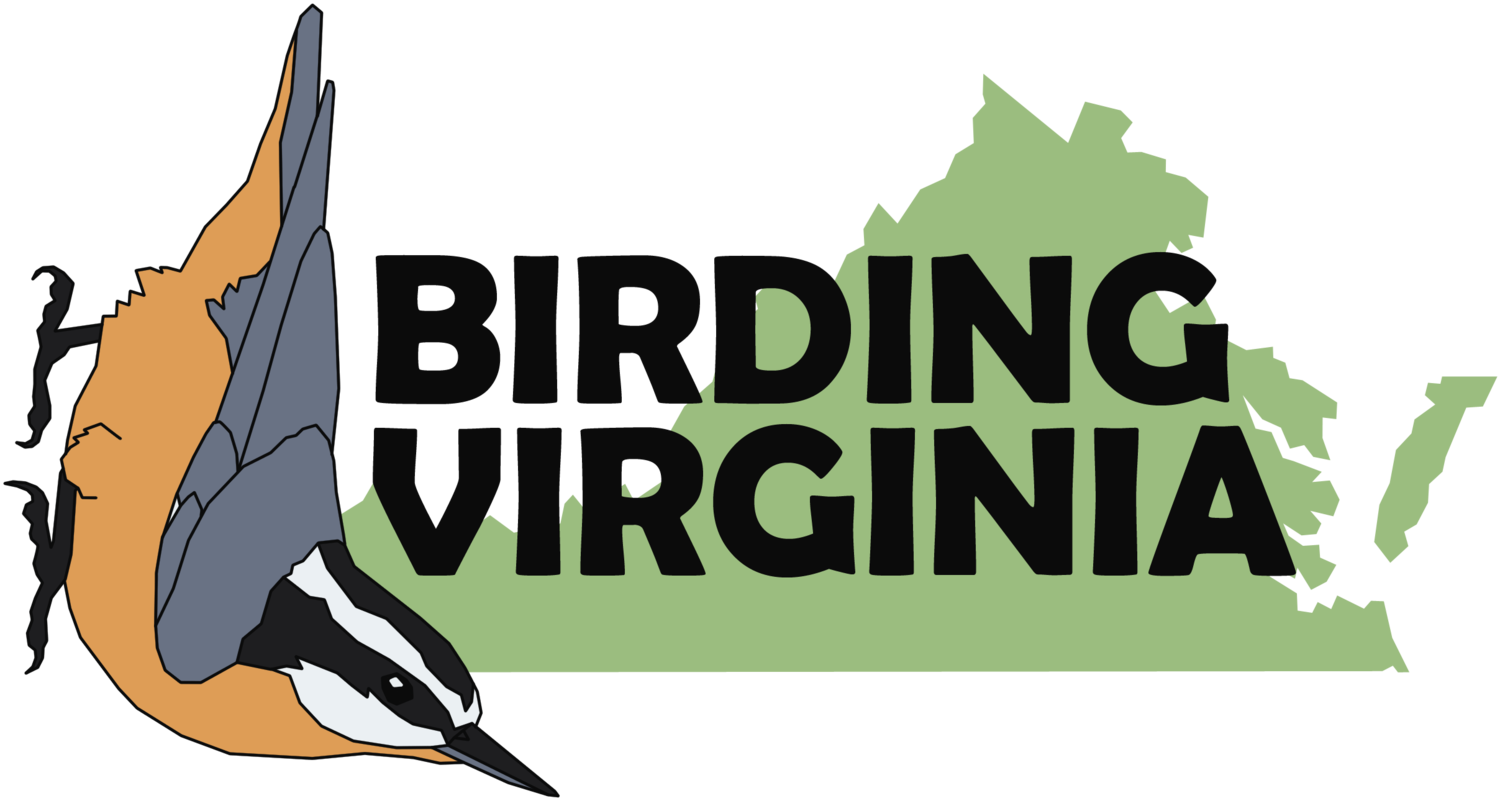A bit of a hidden gem, this park is sandwiched between I-95 to the southeast while the massive dam on Aquia Creek, which forms the namesake lake, looms over the park on its northwest edge. At first glance, one could be forgiven for thinking this is mostly a recreational park with fairly lackluster birding. Road noise from the interstate is an issue, and the most obvious features here are three baseball diamonds and two soccer fields. If a game is on, the park may be packed with spectators. Those who don’t explore any further, however, are missing out on some surprisingly good birding!
The most arresting feature at this park is an extensive series of wet marsh and holding cells filled with shallow water right at the base of the dam. There is a walking path on both sides of this marshy area that makes it very easy to bird, and the edges have an excellent series of tangled vegetation and small trees. Birding the edge is most productive in the fall and winter, when it can become a haven for mixed feeding flocks of passerines. Expect the commoners, including mimids, wrens, finches, cardinals, and the like. But it is also a fine spot to run into fall migrants, and would not be a bad place for a warbler to linger into the late fall. These edges are also a fine spot for sparrows; in winter, Song, Swamp, White-throated and Eastern Towhee are abundant, but less common species including Fox and White-crowned have also been reported. The combination of tangled vegetation backing up to an extensive wet depression seems like an ideal set-up for a vagrant passerine, though none has yet been reported. Perhaps a migrant Nelson’s Sparrow could be detected here, and there are certainly worse places to turn up a LeConte’s. Likewise, this would be a good spot for a warbler or flycatcher to make a stand in the late fall or winter. Though by no means a rarity, there is a late November report of Orange-crowned Warbler, a somewhat scarce bird locally, which certainly suggests that scrutinizing mixed flocks is worthwhile. The marshy cells here aren’t especially good for waterfowl, with the exception of Wood Ducks, which are frequently present and will sometimes flush as birders approach. Though not reported in eBird, the habitat here also seems appropriate for Blue-winged Teal, and could possibly hold other dabblers. It is also worth considering the possibility for rails here; though the marsh is fairly small and perhaps somewhat marginal, it would not be unusual for a Virginia Rail or Sora to drop in from time to time.
Another significant feature here is a meadow on the northeast end, about half as large as the soccer field it backs up to. In fall, this patch can have a very nice mix of weedy vegetation with plenty of goldenrod, and it seems as though it is mowed regularly enough to keep it from growing up. In fall this area is usually rife with Common Yellowthroats, and with a combination of luck and persistent, someone could kick up a Connecticut Warbler here. The meadow also attracts a variety of sparrows, and would be a good place to expect a Lincoln’s in October.
Smith Lake Park also offers some woodland birding, which can be productive for both breeders and migrants. On the northeast side, a primitive footpath runs along the edge of the aforementioned meadow before cutting into the woods. This path seems to be mostly used by fisherman seeking to access Aquia Creek, but it is fine for birding as well. Along with other woodland breeders, look and listen for Louisiana Waterthrush along the creek. There is also a paved trail that runs roughly parallel to I 95 along the park’s eastern edge, eventually entering a more substantial tract of woods and serving as a connector to the adjacent complex of townhomes. Walking this trail in the summer, birders can expect to encounter woodland breeders including Yellow-billed Cuckoo, Eastern Wood-Pewee, Red-eyed Vireo, and Wood Thrush, among others. In spring or fall migration, the woods here could be good for a variety of passerines including vireos, thrushes, flycatchers, and warblers. During winter, check here for the winter woodland suite: Yellow-bellied Sapsucker, Golden-crowned Kinglet, Brown Creeper, Hermit Thrush.
A few other birding tidbits merit a mention here. First of all, there is a small wastewater treatment facility in the northwest corner of the park. It has two small treatment ponds which can be viewed through a chainlink fence, and while they are not large enough to be of substantial birding interest, swallows do sometimes congregate and it could give a chance at Cliff or Bank in migration. A Spotted or Solitary Sandpiper might also be expected on one of these ponds. By late Marsh, returning Ospreys are a common sight here, and they typically nest on one of the tall light structures in the parking area. Finally, there is unfortunately not a particularly easy way to view Smith Lake itself. On the road into the park, it is possible to find a few vantage points where the lake can be glimpsed through the trees. Scanning here in winter typically yields Ring-necked and Ruddy Ducks, Common and Hooded Mergansers, and sometimes loons or grebes. Other ducks could certainly occur here, and Long-tailed Duck has been recorded at least once, so it is worth a quick check.
Accessibility: As befitting a public recreational park, there are plenty of amenities here. Parking is never an issue, as there are two large public lots with ample space. Apart from the sports fields, facilities here include picnic tables and pavilions, restrooms, and paved walking trails. There is also playground equipment. It is worth noting that across Aquia Creek to the north, the park backs up to Marine Corps Base Quantico, which is off-limits to non-military personnel and clearly posted.
Owner/Manager: Stafford County
eBird Hotspot: Smith Lake Park
—Matt Anthony, August 2020
